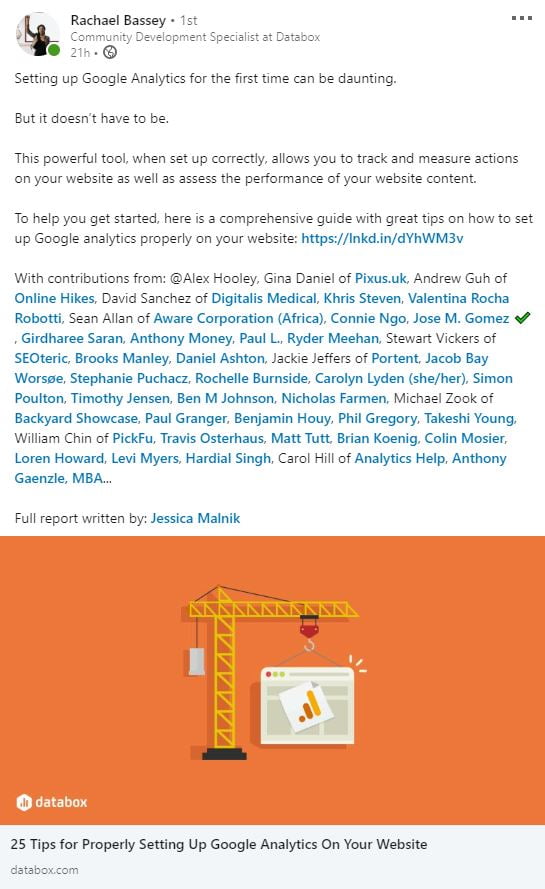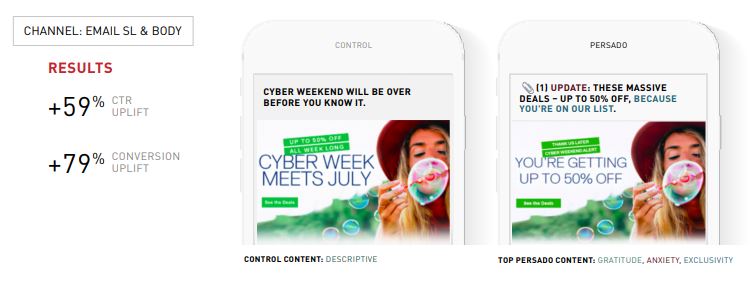Copywriting has trends just like any other industry. Yet, most of us still rely on strategies that worked 40 years ago.
Don’t get me wrong, they work. And very well at that.
However, you need to stay modern if you want to remain competitive.
Knowing the latest copywriting trends will put you ahead of other writers while also generating better performance from the material you write.
So, what trends are we noticing in copywriting? Look for yourself. 👇
1. Voice search and keyword research
Every copywriter needs to know the fundamentals of SEO.
One practice of which is keyword research.
This is the process of using search engine tools to find specific words and phrases to target.
Doing so helps you rank personal or client pages higher on Google, driving traffic and leads.
You want that, right?
Well, how we’ll write SEO focused content is going to change because of one thing…
Voice search.
It’s believed that 30% of all searches beginning in 2020 will be screenless.

That means more people will use Siri, Google, Alexa, and similar channels to make searches.
It’s much more convenient than typing with our big chunky thumbs, anyway.
But, copywriters will need to adjust by researching and implementing full and natural search terms.
No more blocky keywords that we have to force into content to make it sound like it should be there.
For example:
- “Best New York lawyer” will be “What’s the best Lawyer in New York?”
- “2020 Toronto population” will “What’s the population of Toronto in 2020?”
- Etc.
And, where do you normally place keywords? Blog posts, of course.
That brings me to the next trend.
2. More blog posts!
I love blogging. I’m sure you can tell.
And, so do most content marketers. Because, in fact, 53% of marketers say blogging is their top content priority!
This means we’ll be seeing more companies produce blog posts as a means to generate traffic, leads, and authority in 2020.
And, of course, they need someone like us to write them 🙂
Nonetheless, blog writing is a skill and form of art.
There’s an ocean of a difference between a 400 word blog post any newbie could write a 3,000 word masterpiece you’d find on Neil Patel’s blog.
A superb blog post needs specific elements, such as:
- Actionable and practical advice. Don’t just mention ideas or strategies, SHOW readers how to execute them.
- Data, case studies, and statistics to back up any points.
- Proper structure and formatting to help readers glide content through like butter.
- Polished on-page SEO so you or clients have a better time competing in the SERPs.
- Proper grammar, spelling, punctuation, and similar writing rules.
- A unique tone of voice that sets you apart from the rest.
- Images, videos, and visuals to make content more interactive and appealing.
3. Scriptwriting for podcasts and videos
While I love blogging, I’ve been getting into podcasting and YouTube, and do you know why?
They’re exploding! 🔥
45% of all internet users listen to podcasts, for instance.
Think about Joe Rogan, Impact Theory, or other online shows that have massive audiences.
Podcasts are convenient and easy to listen to on-the-go versus other forms of content that require your full attention.
The same goes for video.
Video is a trusted form of content by 40% of millennials. Shout out to my fellow young people 🙂
But, what does this mean for a copywriter?
Firstly, you should consider scriptwriting for podcasts or writing show notes.
Look at the description for this Social Media Examiner episode:

They have a writer transcribe each episode so you can read it as an article.
Additionally, shows need scripts. Some topics can be spitballed, but many long and in-depth episodes will require a specific script to go by.
That’s where you come into the picture.
Scriptwriters typically charge $40-80 per minute of material they write, making it a lucrative copywriting niche to consider.
4. Storytelling increases engagement and trust
Did you know that 88% of B2B marketers agree testimonials are the most effective content marketing tactic?
This is because reviews and testimonials are simply fancy stories.
And, stories are one of the most effective ways to generate trust with consumers.
This is because stories affect us on a very deep emotional level.
They activate several different parts of the brain; increasing attention, memory, empathy, and other processes.
That’s why storytelling is on the rise and taking many different forms in copywriting.
One of the best places to tell a story is the about page of a website.
It’s no longer a place to use buzzwords, write generic copy, and sound like every other company on the internet.
What sparked the inspiration to start your business? Was there a struggle or passion?
Mix in your personality and be transparent.
Look how Empathy Wines does this on their homepage:

Gary Vaynerchuk, the company’s founder, talks about his story growing up in the wine business through a video. He touches on working for his father’s liquor store and the journey it took to start Empathy Wines.
Testimonials found on the right act as social proof while three sections of copy explain the company’s process and values below that.
5. Social media is still relevant
Channels come and go, but social media has stood the test of time so far.
Facebook, Twitter, LinkedIn, and all the major networks are still booming like a city center.
Social media usage across the United States has remained relatively unchanged over the past four years, as well.

This why writing for social media channels is an important 2020 copywriting trend.
But, all channels are different. The users are different. What they want and engage with is different.
Writing the same way for all audiences is a surefire way to receive yawns.
Here are some tips to write copy for the major networks right now.
Twitter is all about the conversation. It’s one of the best channels for directly speaking with consumers, hence why a conversational tone and language is key.
Look how the service provider Cogeco spoke with a Twitter user about a power outage recently:

It’s a casual, friendly, but professional response at the same time.
It sounds like a friend speaking to a friend, right?
Aim to use a friendly and casual tone on Twitter to match the environment or you’ll appear too stiff.
Remember how all of the cool kids sat at one table during lunch? LinkedIn is like that, except for professionals.
So, if you target marketers, executives, and old guys in suits, it’s the place to be.
It also means that you need to speak in a certain way to resonate with the average user.
Remember: professionals aren’t stiff people with personalities of dry paint like their stereotyped as, either.
However, you should still keep a professional tone within an authoritative and friendly message.
Look how Databox does it on a daily basis:

It isn’t overly serious, but it gets the message across with an upbeat voice.
6. Writing webinar content
Guess what one of the most effective pieces of content is right now.
Is it blog posts? Videos? Podcasts?
Nope. It’s actually webinars.
87% of marketers find webinars effective for generating leads and 49% plan to partake in them more often.

It’s also a great opportunity as a copywriter. This is because, despite webinars being video, they require copy, too.
This comes in the form of scripts, lead magnets, slideshows, and other content that is offered during/before a webinar.
Obviously webinars have to be promoted, as well.
That means you can write copy for ads, social media posts, and other channels where they’re being promoted.
7. Personalized copy is critical
Nobody wants to feel like a number in the system. That’s why consumers are demanding more personalized experiences.
Every segment of a customer base is extremely different. From their pain points to values and beliefs, copywriters have to keep these unique traits in mind.
It’s also the reason businesses are beginning to offer tailored experiences to customers; including offers, advertisements, and more based on location, behavior, etc.
As a matter of fact, consumers are more likely to purchase from a brand that:
- Recognizes them by name. (56%)
- Recommends options based on past purchases. (58%)
- Knows their past purchase history. (65%)
- Offers any of the above three options. (75%)

Think about Amazon, for instance. It’s like every time I log on there, they’ve read my mind like a psychic and know exactly what I want.
It, without a doubt, improves my likelihood to purchase along with the overall experience. Most consumers are the same.
So, how can a copywriter put this into action?
Firstly, ensure that you have clear segments to target. Otherwise, you’ll be spending one message to all customers and your campaigns will look at this:
Segments can be separated by the buyer journey stage, location, website behavior, or any other important metric.
Most marketing software will allow you to create segments like these in the click of a button.
The second step is writing copy that aligns with each group’s interests, buying behavior, and pain points.
Dell is a prime example of this. When they noticed that email copy engagement was declining, they opted to use a machine learning solution to segment their audiences.
In particular, they had troubles with:
- Response rates declining or flatlining.
- A lack of customization for each audience.
- No way to scale their email marketing messages.
Their partner used AI to improve the marketing copy of emails, ads, and other materials Dell used to reach customers.
Look how they were able to achieve a 59% increase in CTR and 79% boost in conversions by optimizing their email copy:

This was all thanks to segmenting their audience, analyzing behavior, and presenting unique copy.
Furthermore, they were able to achieve similar numbers by segmenting and optimizing Dell’s Facebook ads.

Consider changing the tone, calls to action, and offers for each segment you target. This has the potential to drastically increase engagement and marketing performance.
8. Trim the fat
I know it can be tempting to offer customers a million different things—coupons, discounts, promotions, shining their shoes, a backrub. (Okay, maybe not the last two.)
However, a study performed by Siegel+Gale concluded that simplicity is the key to successful businesses. Their research found that:
- 64% of consumers will pay for a simplified shopping experience.
- 61% of consumers are more likely to recommend a brand if they are simple.
- Brands are missing out on an estimated share of $86 billion by not providing simple experiences.
Copywriters need to consider creating fewer offers and making them increasingly straight-forward with this in mind.
Final thoughts on copywriting trends
Trends move fast. Not staying up to date on what works in copywriting will reduce the effectiveness and uniqueness of what you write.
Apply the following main takeaways and your copy will have clients rushing to work with you again in no time:
- Target natural and full search terms when writing SEO content.
- Write more blog posts for your personal brand or clients.
- Write scripts and show notes for podcasts.
- Tell more stories to increase emotional connections with audiences.
- Learn how to write properly for each major social network.
- Consider writing content needed to promote and present webinars.
- Personalize copy to each segment for maximizing CTR, conversions, etc.
- Write shorter offers and use straight-forward language.
Contact me for copywriting services or enroll in one my courses to learn more.














